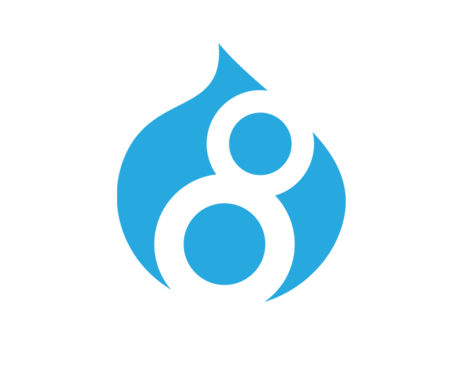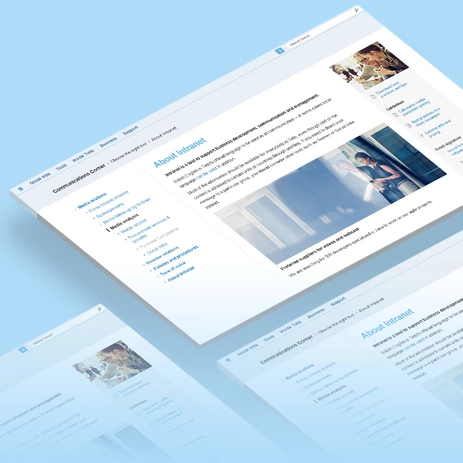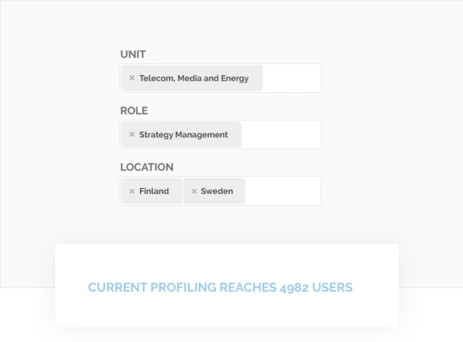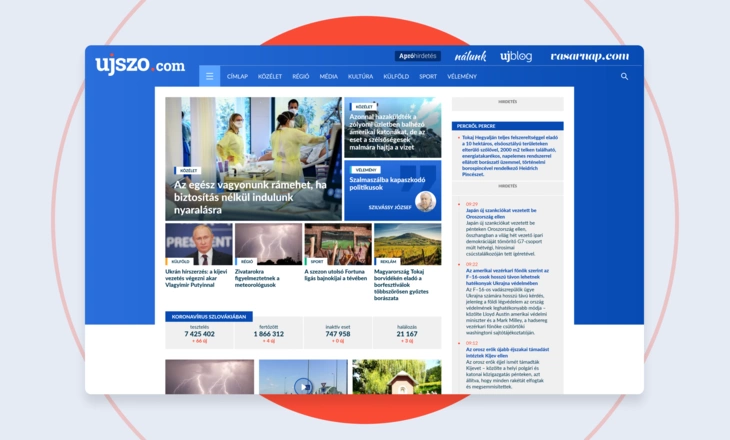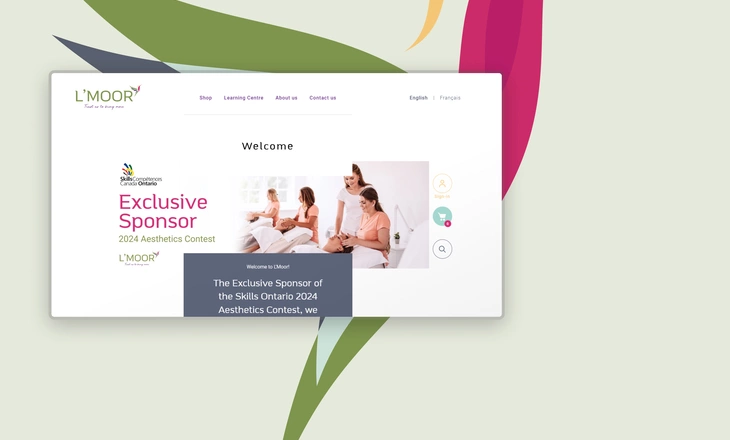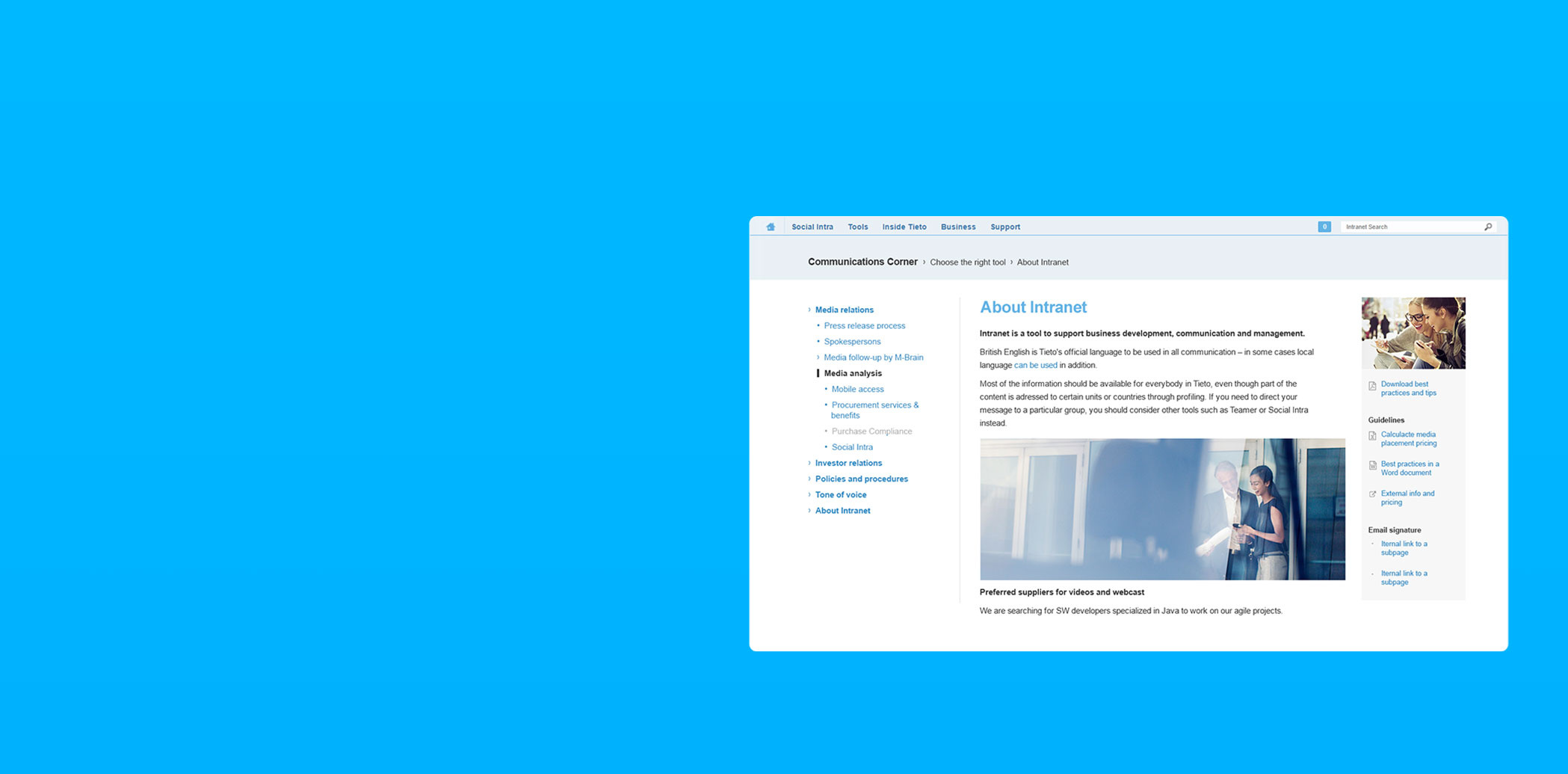

Intranet and content distribution system
Tieto's intranet network is built upon dozens of separate systems, all of which are accessible via a single navigation solution and SSO, which gives end users an experience of a coherent service in the front.
Our client: Tieto Corporation
- Leading Nordic software and services company
- More than 14,000 employees spread across 20 countries
- Annual Turnover above €1.5 billion (2017)
- Open source contribution supporter
The background
Tieto's intranet network is built upon dozens of separate systems, all of which are accessible via a single navigation solution and SSO, which gives end users an experience of a coherent service in the front.
Custom solution replaced by Drupal 8
The Intra intranet and The Intra News website was migrated from a legacy CMS software called Elevation. The current solution runs on Drupal 8, a versatile open-source content management system. It’s worth mentioning that this Intra Corners site emanated from the Intra News site, which had been developed a year earlier. Therefore, these two websites share a great deal in common, although there are some key distinctions in their purpose and feature set.
Single sign-on (SSO) integration with Active Directory (AD) via LDAP
User authentication is outsourced into Active Directory, which provides smooth login process for end-users. Once logged into their personal computers enrolled into Tieto domain, the website automatically recognizes the users and grants them the assigned roles with necessary permissions.
Intranet, content organization
The Intranet content is for general information pages organised into a huge tree navigation.
Content migration
Tieto Intranet has spanned for just over a decade, resulting in tens of thousands of manually crafted web pages. As the massive migration was being processed, the legacy database structure was reverse engineered and imported over into Drupal 8 CMS, which has been scaled up to be capable of handling such an amount of data.
Granulated permission assignment
As Tieto Intranet is the fundamental publishing platform for internal communication, which all employees are supposed to have access to, it's obvious that controlling the necessary rights requires multi-level hierarchy among users. Therefore, the system offers seven separate roles. Some of them are based on a custom logic limiting down their access only to a given section of the content structure.
Content distribution system
The News is for creating profiled news and announcements consumed via a central feed aggregator system.
Content syndication
The fundamental purpose of the website existence is to be a central hub of publishing time-related information (eg. news, announcements, alerts, etc.) not only on a human-readable style but also in a format (RSS) that other interconnected systems can consume and process on their own.
Target audience profiling
As this system plays a key role in reaching out to all employees within such a large organization, there is a vital need to somehow sort out the huge amount of information based on the interest of each user group. Consequently, the system provides multi-level segmentation options for editors, enabling them to decide which particular group of colleagues (eg. department, location or role) they intend to convey their message to.
UX & content editing
We have extended the Drupal's out-of-the-box editorial UI to deliver thoughtful user experiences for content editors. As a main result of our UX efforts we have delivered user-friendly, intuitive content publishing and scheduling workflow.
AND MORE
- Custom WYSIWYG CKEditor-plugins
- Timezone handling - the corporate policy for date and time formatting and timezone handling has been implemented
- Brand new experience for publishing workflow
- Continuous support and consultation
- Automated test coverage on key editorial features using Behat framework running dozens of scenarios written in Gherkin
